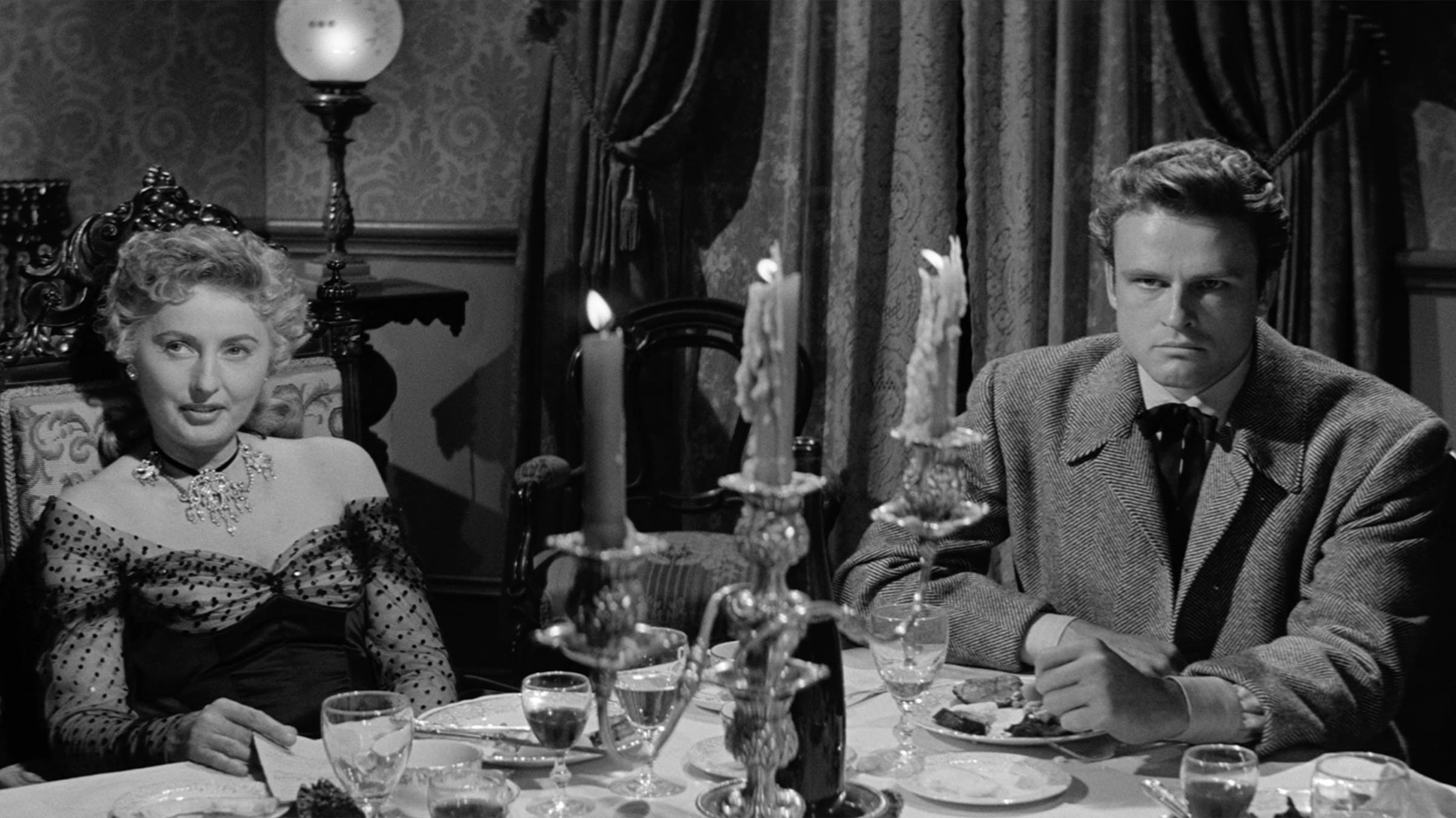Forty Guns: High-Riding Woman

“It’s sad to say, but women do not have much importance in westerns,” observed Anthony Mann, a master of the genre, in a 1957 Cahiers du cinéma interview. Made that same year, Samuel Fuller’s Forty Guns begins with a whopper of a scene that tells a different story. A small wagon plods across a vast landscape, still and quiet save for the rolling clouds and chirping birds. “Whoa!” calls the man holding the wagon reins, as a thunderous sea of hooves appears. Forty horsemen advance over a ridge at full gallop, led by a woman dressed in black astride a white stallion. Her riders rapidly bear down on the wagon like a lion on its prey, splitting to form a moving gauntlet on either side. The scene cuts between high- and low-angle shots as the men in the wagon cower from the dust and the harnessed horses rear, trapped and squealing, their vulnerability amplified by the visceral construction of space and contrapuntal sound. Then the woman and her forty guns are gone, as fast as they arrived. The men in the wagon gaze at the receding dust trail in shock. “That was no ordinary woman,” they seem to be thinking. And we realize: this will be no ordinary western.
Over the course of more than fifty years, Samuel Fuller surprised and provoked audiences with boldly original, convention-bashing films rooted in action-oriented genres. Already an accomplished journalist, novelist, and screenwriter and a decorated World War II infantryman by the time he began directing in 1949, Fuller cut his filmmaking teeth at Lippert Productions in the world of B movies, learning how to exploit limited resources to produce the maximum punch. The hard-hitting realism and outsize success of his Korean War film The Steel Helmet (1951) earned him a contract with Twentieth Century-Fox in the waning days of the studio system. Fuller got along well with Fox’s production chief, Darryl Zanuck, and directed such standout features as the seminal film noir Pickup on South Street (1953) and the visually sublime policier House of Bamboo (1955), but by 1956 he had eagerly left the studio in search of greater creative freedom.
“It is Fuller’s most entertaining and audacious assault on classical and generic conventions up to this point in his career.”









